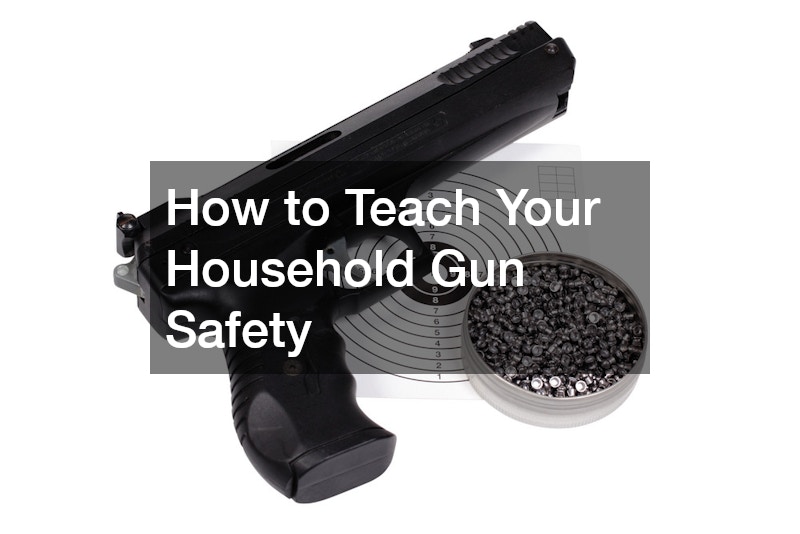
Owning a firearm brings responsibility beyond just its use; it includes ensuring the safety of everyone in your household. Proper gun safety education helps prevent accidents, fosters a sense of responsibility, and ensures that every member understands how to act safely around firearms. From safe storage practices to hands-on training, there are steps you can take to create a secure environment. Whether you’re an experienced gun owner or new to firearms, making gun safety a part of your household culture is essential. Here’s a comprehensive guide to keeping your home safe while responsibly owning and managing firearms.
1. Start with Safe Storage
Safe storage is the first and most crucial step in keeping your household safe. Guns should be kept out of reach of unauthorized users, especially children, to prevent accidents. Proper storage also protects your firearms from theft or misuse.
- Invest in a high-quality gun safe: Choose a safe that is tamper-proof, fire-resistant, and sized appropriately for your firearms. Many safes come with biometric locks or keypad combinations, adding an extra layer of security.
- Use a barrel holder as an accessory for your safe: One effective accessory for your safe is a barrel holder. A barrel holder keeps firearms organized within the safe, ensuring they are stored upright and secure, minimizing the risk of damage. This accessory is particularly useful if you own multiple firearms, as it prevents clutter and makes access easier in emergencies.
- Store firearms unloaded: Always unload firearms before storing them. Keep the ammunition in a separate, locked compartment to further enhance safety.
2. Introduce the Four Fundamental Gun Safety Rules
Gun safety rules provide a framework for handling firearms responsibly. These rules are universally recognized and should be taught to everyone in the household, regardless of whether they will use a gun themselves.
- Treat every firearm as if it’s loaded: Teach your household members to assume a gun is always loaded, even when they believe it isn’t. Show them how to visually and physically inspect the chamber to confirm it is empty. Use the “pinky test” by placing a finger inside the chamber to ensure there are no rounds.
- Never point a gun at anything you’re not willing to destroy: This rule emphasizes awareness of where the firearm is aimed at all times. During training, demonstrate safe muzzle direction and ensure that everyone understands why this is critical.
- Keep your finger off the trigger until ready to shoot: Instill the habit of keeping fingers outside the trigger guard until sights are on the target and a decision to fire has been made. Use training exercises to reinforce this behavior.
- Know your target and what lies beyond it: Teach situational awareness by discussing potential scenarios, such as shooting at a range with a backdrop or in a location where others might be behind the target. Encourage checking for people, animals, or objects that could be inadvertently hit.
3. Use Professional Training and Resources
Sometimes, professional help can provide a more comprehensive understanding of gun safety than what you can teach alone. Taking advantage of resources in your community ensures your household receives accurate and thorough education.
- Visit local gun shops for guidance: Many gun shops offer safety courses or can connect you with certified firearm instructors. These professionals can provide hands-on training and answer specific questions about safe handling and maintenance.
- Sign up for community safety programs: Look for gun safety workshops in your area. These courses often include practical demonstrations, allowing participants to practice safe handling in a controlled environment.
- Use online resources cautiously: While online tutorials can supplement knowledge, prioritize reputable sources with certified instructors to avoid misinformation.
4. Practice Safety Scenarios
Practical training ensures that everyone knows what to do in specific situations. It also builds confidence and reinforces safety habits.
- Run practice drills: Set up scenarios like handling an unloaded firearm safely or reacting to finding a firearm unsecured. These drills help establish muscle memory and confidence in following safety procedures.
- Use dummy firearms for training: If possible, invest in non-functional training replicas. These allow participants to practice safe handling without the risk of accidents.
- Simulate emergency responses: Teach your household how to respond if a firearm is mishandled or if someone discovers an unsecured gun. Role-play these situations to ensure everyone knows the appropriate steps.
5. Set Clear Rules for Children
Children are naturally curious, so it’s essential to address gun safety in an age-appropriate manner. Avoid fostering fear but instead promote respect and understanding.
- Teach children to never touch a gun without permission: Explain the dangers of firearms and why they should never handle one without an adult present. Reinforce this rule regularly.
- Encourage reporting: Teach children to inform an adult immediately if they come across a firearm, whether at home or elsewhere. Role-play scenarios to prepare them for this situation.
- Avoid glamorizing firearms: Be mindful of how firearms are portrayed in your household, as this can influence a child’s perception. Focus on their role as tools for specific purposes, such as self-defense or sport.
6. Regularly Inspect Your Firearms and Safety Gear
Maintaining your firearms and safety equipment is an ongoing responsibility. Regular inspections ensure everything is in good working condition and reduces the risk of malfunctions.
- Check your gun safe periodically: Ensure that the locking mechanism works smoothly and that the safe remains secure. Test biometric or keypad locks for responsiveness.
- Inspect firearms for damage or wear: Look for signs of rust, debris, or other issues that might affect the firearm’s functionality. Clean and maintain them as recommended by the manufacturer.
- Reorganize your safe: Use tools like barrel holders to keep firearms organized and prevent clutter. Regularly reassess your storage system to ensure it meets your household’s needs.
7. Maintain Open Communication
Gun safety is an ongoing conversation, not a one-time lesson. Keeping the lines of communication open ensures that everyone remains vigilant and informed.
- Regularly discuss gun safety rules: Reinforce the four rules of gun safety and encourage questions. A household that understands these principles is more likely to follow them.
- Address concerns promptly: If anyone in your household feels unsure or uncomfortable about firearm safety, provide immediate support or seek professional advice.
- Encourage responsible behavior: Foster a culture of accountability where every household member understands the importance of respecting firearms.
Teaching gun safety in your household is an investment in security, responsibility, and peace of mind. By prioritizing safe storage, leveraging resources like gun shops, and consistently reinforcing safety practices, you can create a safe environment for everyone. Remember, safety is a shared responsibility that requires diligence, clear communication, and regular practice.

